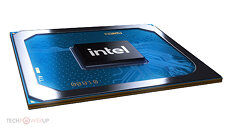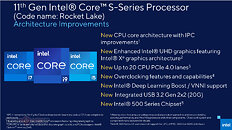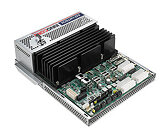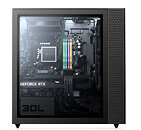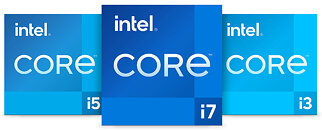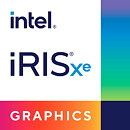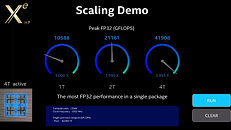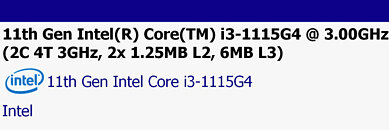
Intel Storms into 1080p Gaming and Creator Markets with Iris Xe MAX Mobile GPUs
Intel today launched its Iris Xe MAX discrete graphics processor for thin-and-light notebooks powered by 11th Gen Core "Tiger Lake" processors. Dell, Acer, and ASUS are launch partners, debuting the chip on their Inspiron 15 7000, Swift 3x, and VivoBook TP470, respectively. The Iris Xe MAX is based on the Xe LP graphics architecture, targeted at compact scale implementations of the Xe SIMD for mainstream consumer graphics. Its most interesting feature is Intel DeepLink, and a powerful media acceleration engine that includes hardware encode acceleration for popular video formats, including HEVC, which should make the Iris Xe MAX a formidable video content production solution on the move.
The Iris Xe MAX is a fully discrete GPU built on Intel's 10 nm SuperFin silicon fabrication process. It features an LPDDR4X dedicated memory interface with 4 GB of memory at 68 GB/s of bandwidth, and uses PCI-Express 4.0 x4 to talk to the processor, but those are just the physical layers. On top of these are what Intel calls Deep Link, an all encompassing hardware abstraction layer that not only enables explicit multi-GPU with the Xe LP iGPU of "Tiger Lake" processors, but also certain implicit multi-GPU functions such as fine-grained division of labor between the dGPU and iGPU to ensure that the right kind of workload is split between the two. Intel referred to this as GameDev Boost, and we detailed it in an older article.
The Iris Xe MAX is a fully discrete GPU built on Intel's 10 nm SuperFin silicon fabrication process. It features an LPDDR4X dedicated memory interface with 4 GB of memory at 68 GB/s of bandwidth, and uses PCI-Express 4.0 x4 to talk to the processor, but those are just the physical layers. On top of these are what Intel calls Deep Link, an all encompassing hardware abstraction layer that not only enables explicit multi-GPU with the Xe LP iGPU of "Tiger Lake" processors, but also certain implicit multi-GPU functions such as fine-grained division of labor between the dGPU and iGPU to ensure that the right kind of workload is split between the two. Intel referred to this as GameDev Boost, and we detailed it in an older article.
